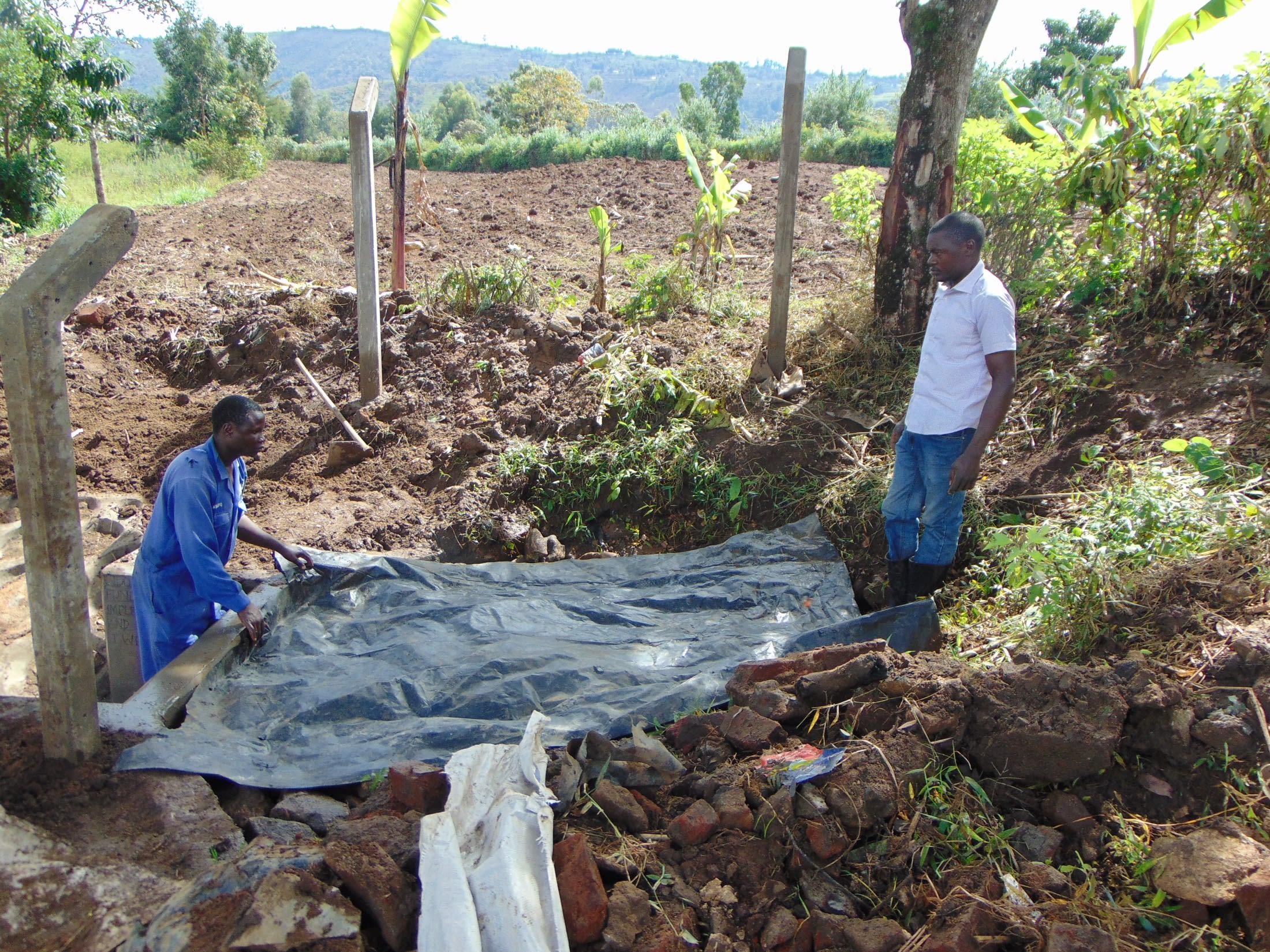210 community members and hundreds of children at a nearby school rely on Ikoli Community's spring to meet their daily water needs.
The spring was protected by another organization in 2006, but has not been maintained. In its current state, the spring leaves the community vulnerable to water-related illnesses. The back-filled area of the spring box should be comprised of several carefully constructed and covered layers of filtration, but in Ikoli it is open and unfenced. The collection pipes are not secure and are too low for people to collect water without laying their containers in dirty water. The cloudy water on the spring's floor is not properly draining, so they must stand in it to reach the pipes. In tandem, all these malfunctioning parts contaminate the water and make community members sick.

Community members report suffering from preventable illnesses like typhoid, amoeba, and frequent diarrhea due to consuming this water.
“A significant proportion of diarrheal disease can be prevented through safe drinking water and adequate sanitation and hygiene.” - WHO
"I have to be up very early in the morning so as to be able to come and get water before it is contaminated by people and before the collection area floods with water. This means sometimes I have to be up as early as four in the morning. By the time it is midday, I am so tired, and I become ineffective in other chores towards the evening," said Joyce Muyoka, a 36-year-old farmer. Joyce (in the pink shirt) is seen below carrying water home from the spring with another community member and several children.

Ikoli's people mistakenly believe that if they avoid the water during busy times of the day, it will be clean, and their chances of becoming ill will reduce. So every morning, community members try to be the first to draw water. Still, everyone has the same idea, and frustration grows, causing conflicts and disturbing the peace in the community.
"I have had a series of conflicts with my friends because of the scrambling for water. This has made relationships very strenuous [and] this is caused by the overcrowding at the water point," said nine-year-old Ezekiel M., seen below collecting water.

Hopefully, by protecting their spring properly and with ongoing maintenance, the people in Ikoli can quickly collect safe water that will allow them time to focus on other priorities and restore unity within the community.
What We Can Do:
Spring Protection
Protecting the spring will help provide access to cleaner and safer water and reduce the time people have to spend to fetch it. Construction will keep surface runoff and other contaminants out of the water. With the community's high involvement in the process, there should be a good sense of responsibility and ownership for the new clean water source.
Fetching water is a task predominantly carried out by women and young girls. Protecting the spring and offering training and support will, therefore, help empower the female members of the community by freeing up more of their time and energy to engage and invest in income-generating activities and their education.
Training on Health, Hygiene and More
To hold trainings during the pandemic, we work closely with both community leaders and the local government to approve small groups to attend training. We ask community leaders to invite a select yet representative group of people to attend training who will then act as ambassadors to the rest of the community to share what they learn. We also communicate our expectations of physical distancing and wearing masks for all who choose to attend.
The training will focus on improved hygiene, health, and sanitation habits in this community. With the community's input, we will identify key leverage points where they can alter their practices at the personal, household, and community levels to affect change. This training will help to ensure participants have the knowledge they need about healthy practices and their importance to make the most of their water point as soon as water is flowing.
Our team of facilitators will use a variety of methods to train community members. Some of these methods include participatory hygiene and sanitation transformation, asset-based community development, group discussions, handouts, and demonstrations at the spring.
One of the most important issues we plan to cover is the handling, storage, and treatment of water. Having a clean water source will be extremely helpful, but it is useless if water gets contaminated by the time it is consumed. We and the community strongly believe that all of these components will work together to improve living standards here, which will help to unlock the potential for these community members to live better, healthier lives.
We will then conduct a small series of follow-up trainings before transitioning to our regularly scheduled support visits throughout the year.
Training will result in the formation of a water user committee, elected by their peers, that will oversee the operations and maintenance of the spring. The committee will enforce proper behavior around the spring and delegate tasks that will help preserve the site, such as building a fence and digging proper drainage channels. The fence will keep out destructive animals and unwanted waste, and the drainage will keep the area's mosquito population at a minimum.



 Rehabilitation Project
Rehabilitation Project





































